

James Wong
2026 Nissan Ariya review
3 Days Ago
The GLS variant is the pick of the Triton range, with the best balance between capability and price.
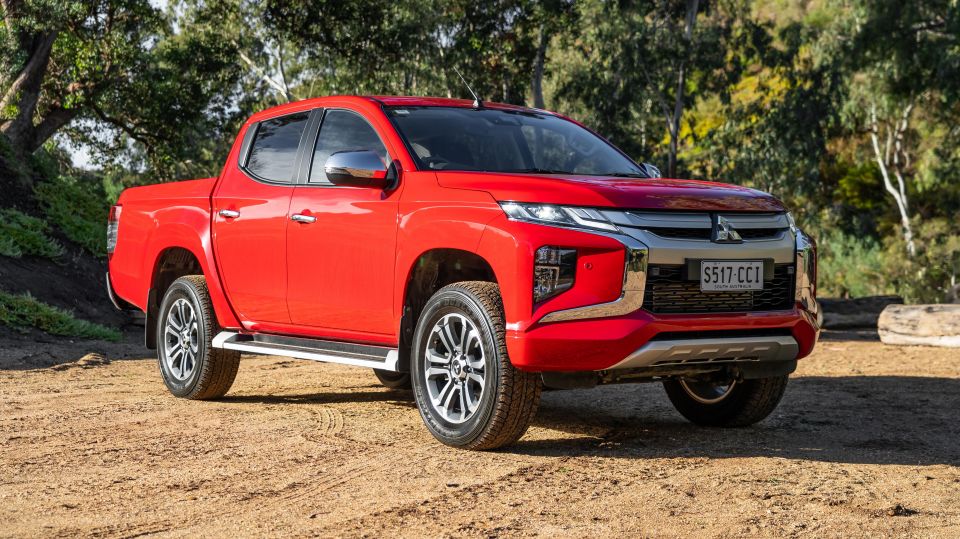


Senior Contributor

Senior Contributor


Senior Contributor

Senior Contributor
Quickly see how this car stacks up against its competition. Select any benchmark to see more details.
Where expert car reviews meet expert car buying – CarExpert gives you trusted advice, personalised service and real savings on your next new car.
More private buyers opt for Toyota HiLuxes and Ford Rangers, but the Mitsubishi Triton deserves its place as number three in the sales race, ahead of the Isuzu D-Max and Nissan Navara.
It’s usually well-made and more importantly, affordable. And if I might add, unpretentious. It doesn’t really put out headline numbers, or attract hardcore fan groups here, though in some nations it’s a staple of mining sectors and ute scenes alike.
Yet Mitsubishi’s designers went to town for the recent update in a bid to move the dial on this last point further. There’s a bluffer bonnet, a meaner grille, and blistered guards, which add some toughness to the look that hasn’t been a Triton calling card.
It’s still a smidgen more compact that key competitors though: 40mm narrower than a HiLux, 77mm shorter than a Ranger, and 150mm shorter between the wheels than a Navara for example.
The grade we’re looking at here is the 2021 Mitsubishi Triton GLS, which sits a rung below the flagship GSR. It’s sort of equivalent to a luxury Ranger XLT or HiLux SR5, but cheaper even than a tradesman-spec XLS and SR.
Pricing for the Mitsubishi Triton GLS grade with optional six-speed automatic as tested is $49,540 before on-road costs, but as is the way with these things, you should expect a better deal.
Right now on Mitsubishi’s own site they’re advertising the Triton GLS for $46,040 drive-away for the six-speed manual, or $51,490 drive-away for the six-speed automatic with the optional Deluxe Option – which brings leather-appointed seats, a powered driver’s seat, heated front seats and 360-degree camera system.
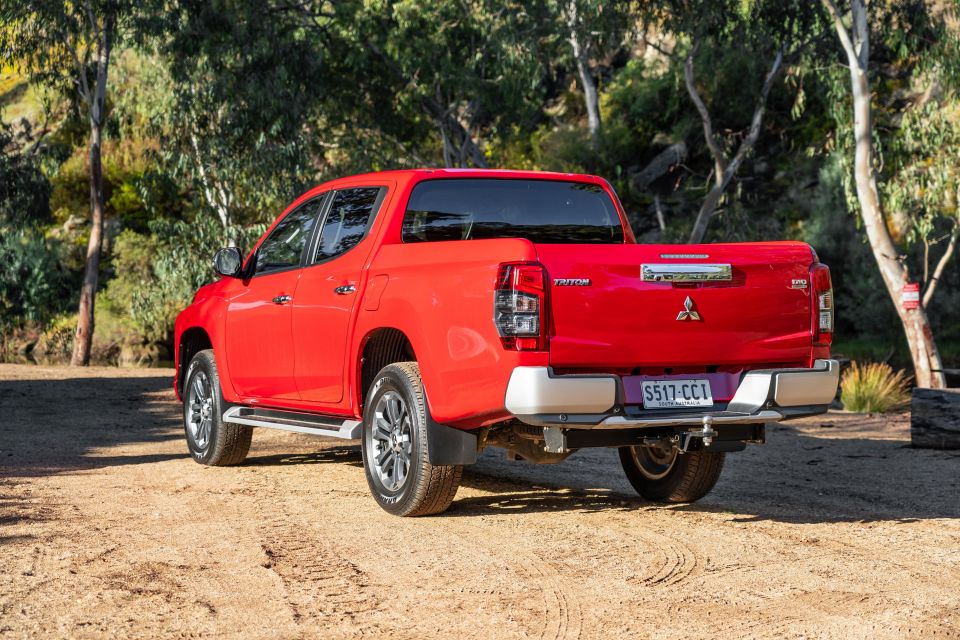
To give some context, the recommended retail price on a less-well-equipped HiLux SR is $50,010 before on-road costs, while a Ranger XLS is $52,290 before on-roads. To compare a Triton GLS’s list price to a HiLux SR5 or Ranger XLT you’re looking at a premium of around $10,000. Even recommended retail on a Navara ST is some $4000 greater.
While utes are subject to all sorts of incentives, campaigns, and tax breaks, for most people the Triton will be the cheapest of the main competitors, notwithstanding newer arrivals such as the LDV T60 and SsangYong Musso.
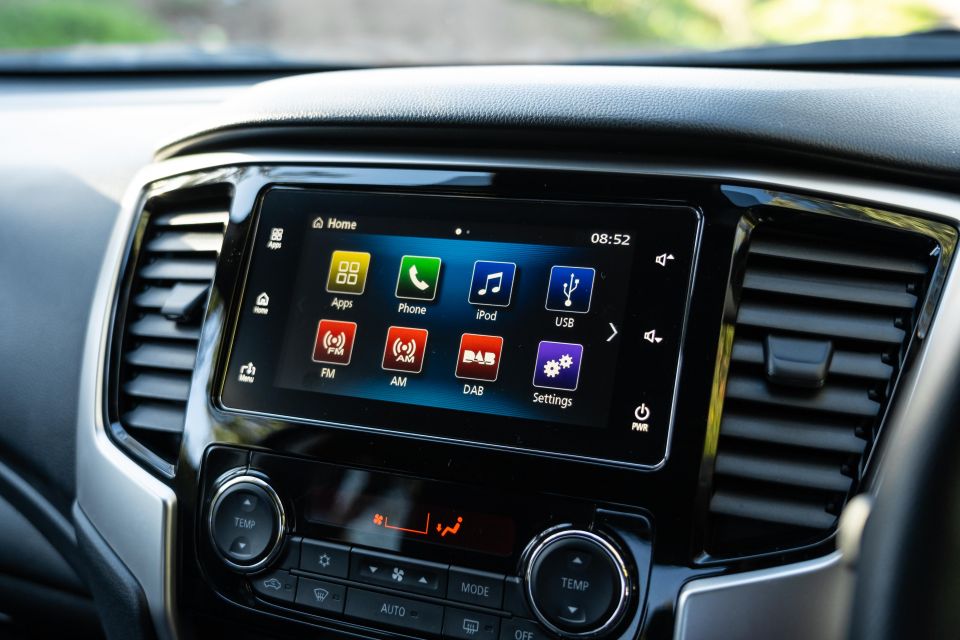
Buy your new car without the stress. It's fast, simple and completely free.

Great service from Travis and team, second time I have used this business would not hesitate to recommend them to anyone
Craig C.
Purchased a Ford Ranger in Sunshine Coast, QLD
CarExpert helped Craig save $7,224 on his Ford Ranger, now let us save you on your next new car.
Get your BEST priceThe Triton GLS gets the followings the following equipment:
The Deluxe Option package, available only on the GLS auto, brings:
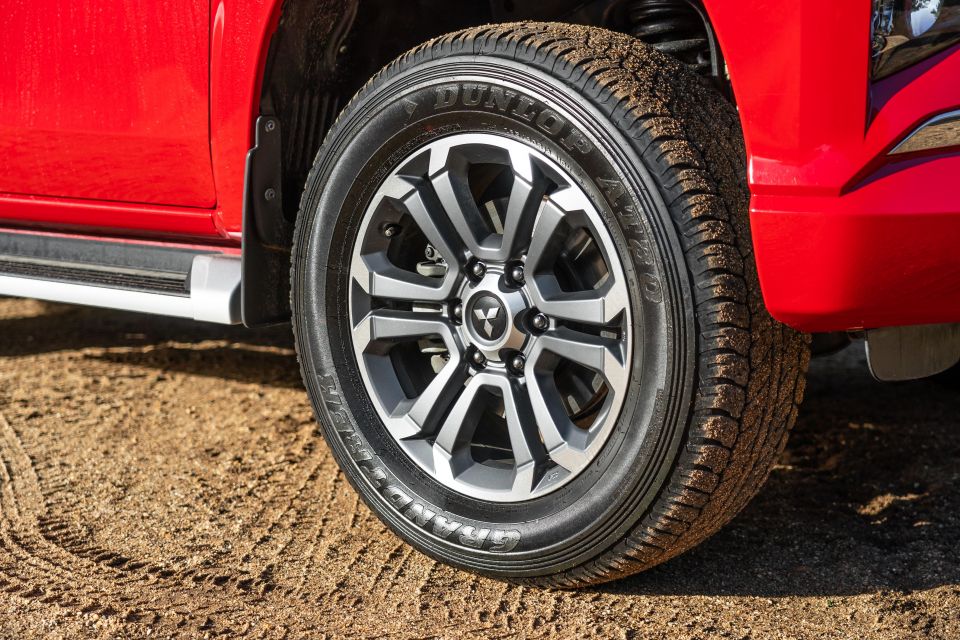
That’s on top of features form lower grades including:
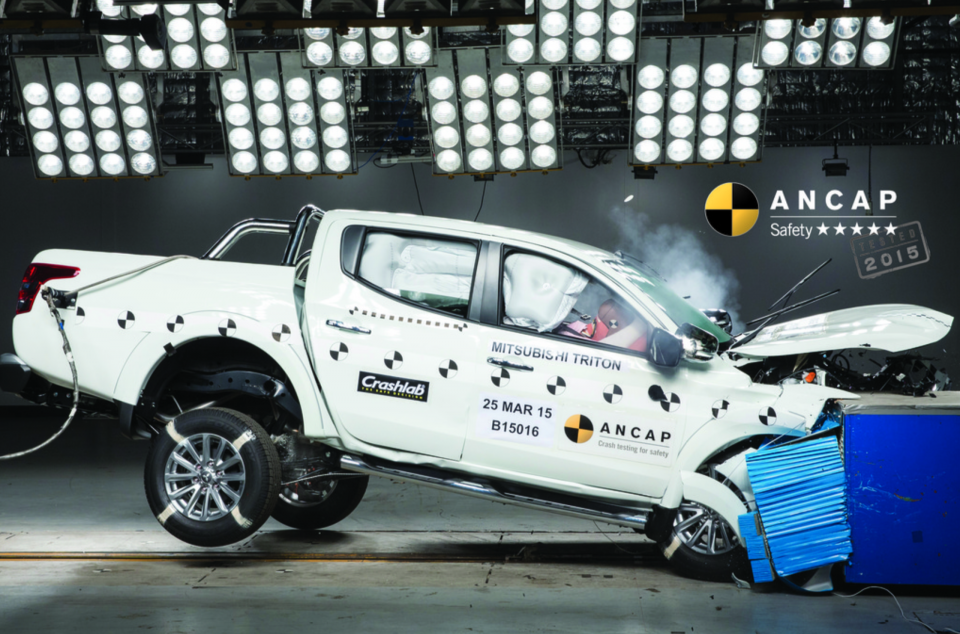
Crash tester ANCAP awarded the Triton five stars in 2015 with a score of 36.22 out of 37 against older criteria.
It has seven airbags including side curtains for both rows, two ISOFIX and top-tether child seat attachment points, child door and window locks, and a long list of driver-assist features including:
This last system kills the throttle if, for instance, you engage Drive instead of Reverse near a forward obstacle. Some jokingly call this an elderly driver assistance function.
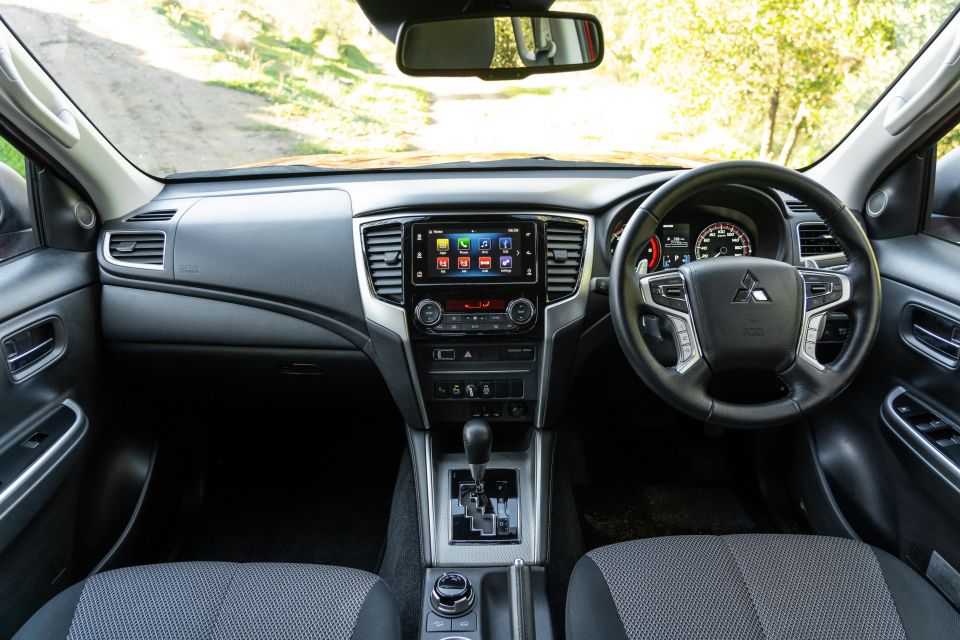
The Triton’s interior is no-nonsense and rather plain, but well made. The plastic panels are hard-wearing and fit together consistently, and over corrugated roads there was no rattling. There are also multiple grab handles to help you up.
Small touches to jazz up the Mitsubishi Triton GLS include padding at knee height along the transmission tunnel, a fairly upmarket steering wheel with rally car paddles mounted on the column, and silver and black plastic trim highlights.
There is telescopic adjustment for the steering wheel – unlike some ute rivals including the Ranger – yet no height adjustment for the seat. The pews themselves are trimmed in tough, yet nicely-patterned, cloth.
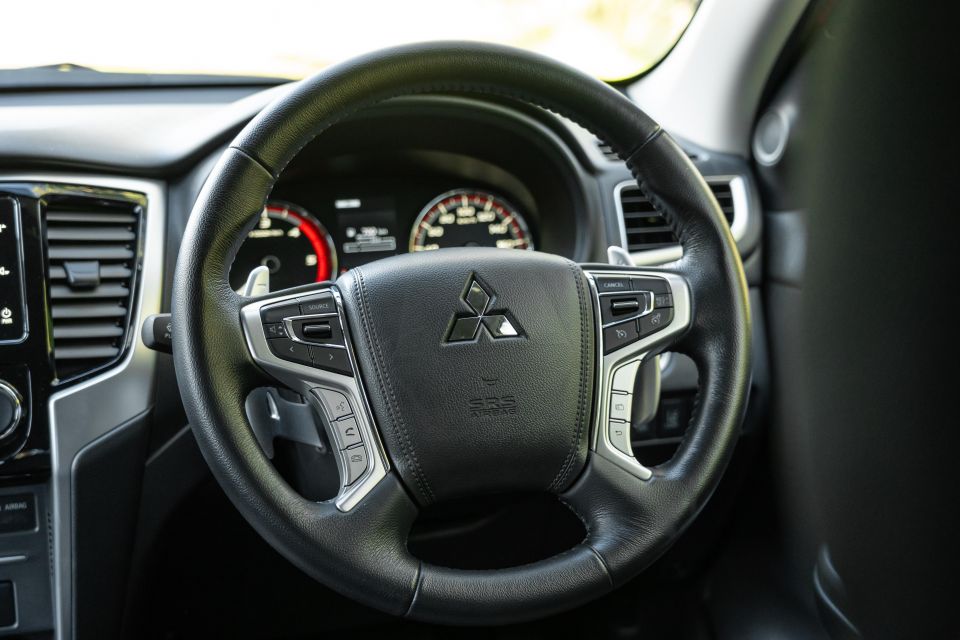
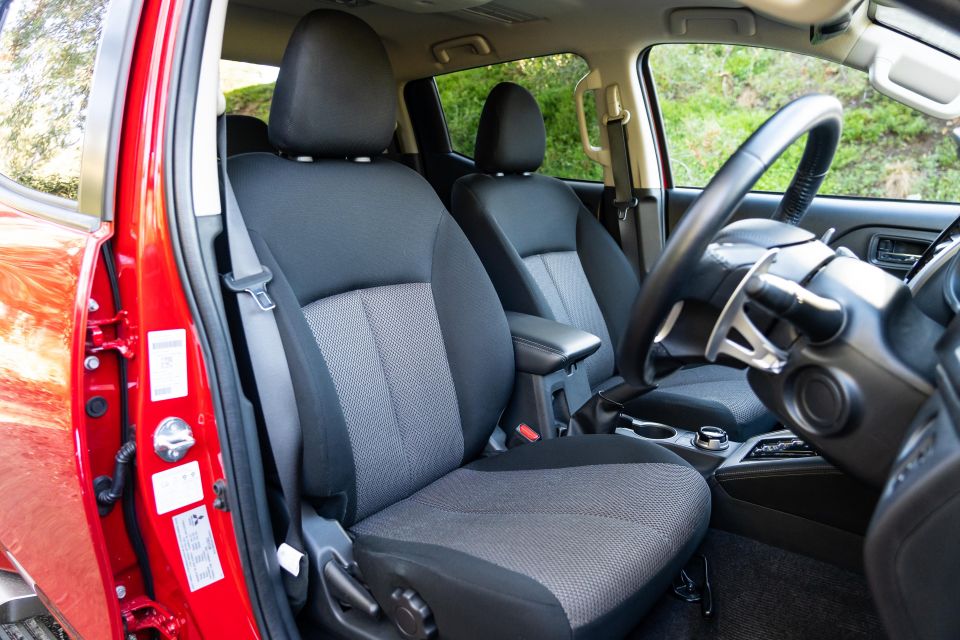

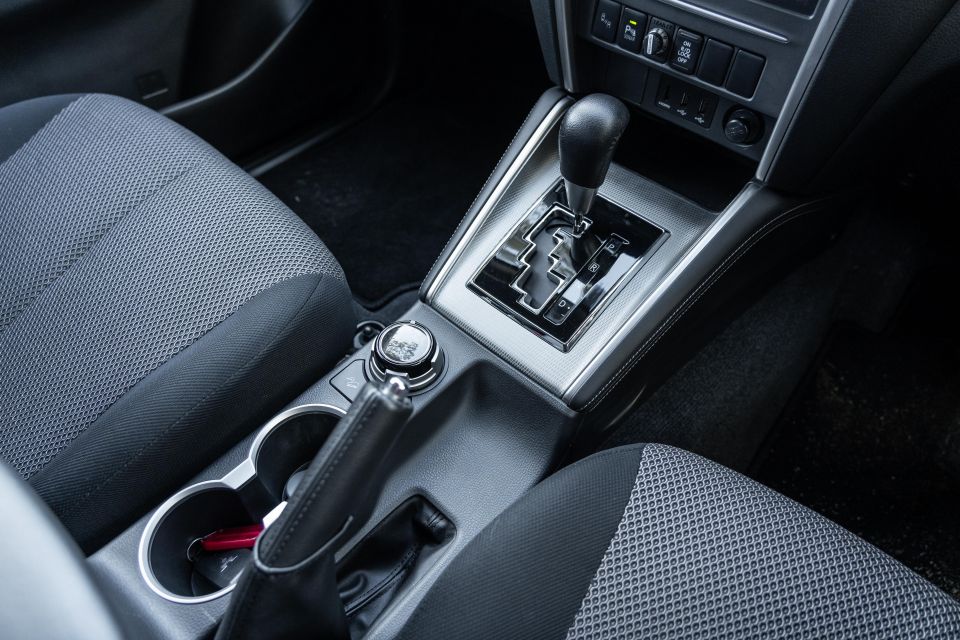
Storage spots include cupholders, an open cubby below the USB ports ahead of the gear shifter, a narrow but deep centre console, big doors bins with room for a one litre bottle or two, and a glovebox.
The analogue driver instruments are clear and the screen between them shows trip data and four-wheel drive system settings, but lacks a digital speedo. I tend to think in states like Victoria where 104km/h can get you fined in a 100km/h zone, this feature should be mandatory.
The centre screen is basic but everything works fine. Bluetooth phone quality was sufficient for highway calls and the reversing camera has clear resolution. Some might rue the lack of satellite navigation, but the Apple CarPlay and Android Auto phone mirroring allow Google Maps or Waze.
Because the Mitsubishi Triton is a little narrow by class standards, you do sit closer to your passenger. However there’s ample headroom and shoulder room for most.
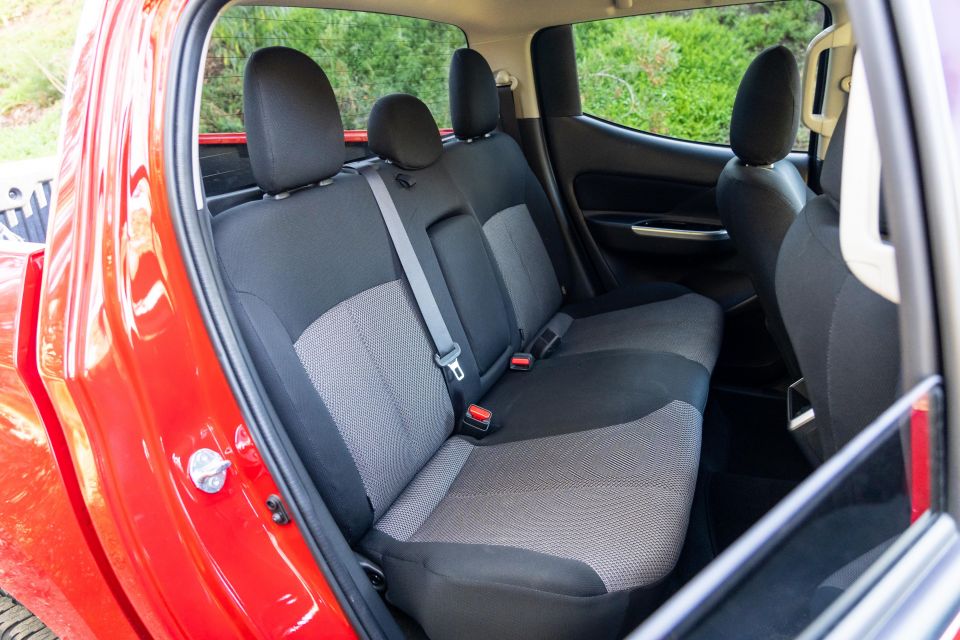
The rear seats are protected by side airbags and come with two ISOFIX and top-tether anchor points. The seat-backs fold down to reveal the spare-tyre tools.
Between each outboard rear seat is a pull-down armrest with cup holders. Other amenities include two USB points, grab handles on the B-pillars, folding overhead handles that sit out of way unlike the rigid ones in a HiLux, and air vents in the roof with controls. The reading lights are bright.
I’m 194cm and had adequate knee room and foot room behind my own driving position, but less-than-perfect headroom, since the seats are mounted quite high. For most people they’ll be fine, I suspect.
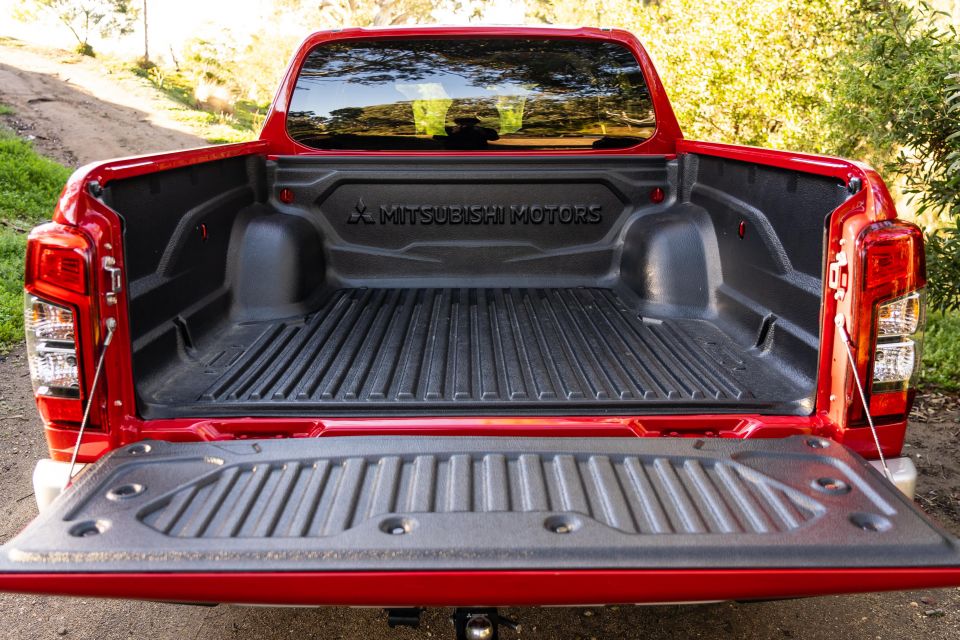
There’s nothing too showy about the Triton’s cabin, except the Lancer Evo paddle shifters on the steering column, but it feels hard-wearing, the ergonomics are sound, and the infotainment won’t date quickly. It’s also suitable enough as a second family car.
As for the tub? Ours was fitted with a factory bed liner. It measures 1520mm long with the tailgate up, 1470mm wide, 475mm deep, and 1085mm between the arches.
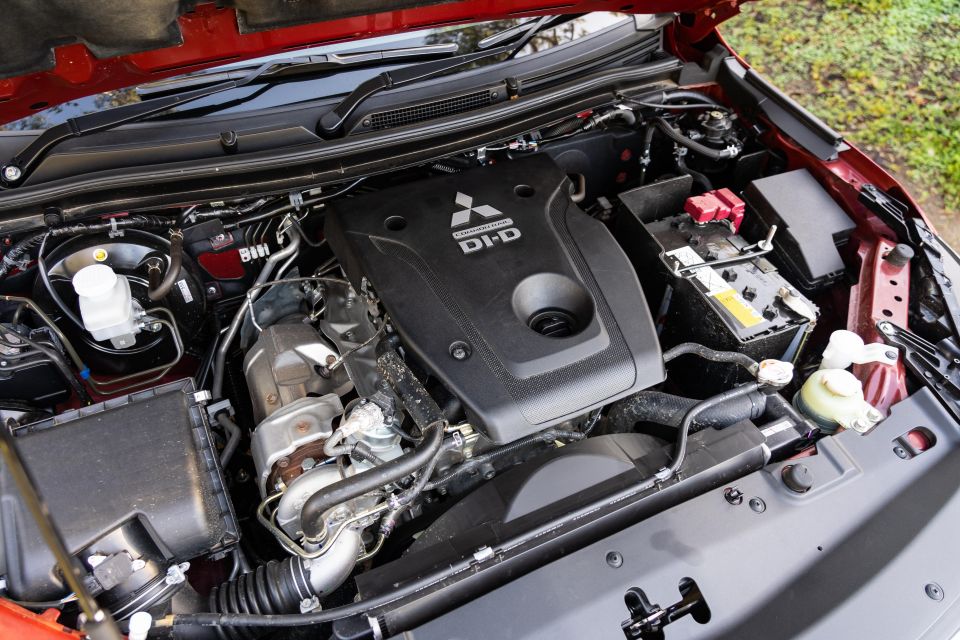
A 2.4-litre turbo-diesel making 133kW of power at 3500rpm and 430Nm of torque at 2500rpm. A six-speed manual gearbox is available but here we’re driving the six-speed automatic with column-mounted paddle shifters.
It is a part-time four-wheel drive with a lockable rear diff for off-roading – which minimises the chance of an airborne tyre spinning wildly and the grounded tyre doing jack. It also has Mitsubishi’s Super-Select II 4WD system with familiar rear-drive (2H), four-wheel drive with a locked centre differential (called 4H Lc), and low-range with locked centre diff (4L Lc).
But the GLS’s system also has a 4×4 setting (just 4H) that leaves the centre diff open and uses the car’s ‘brain’ to control torque flow, meaning you can drive this way all of the time without fretting about winding-up the transmission.
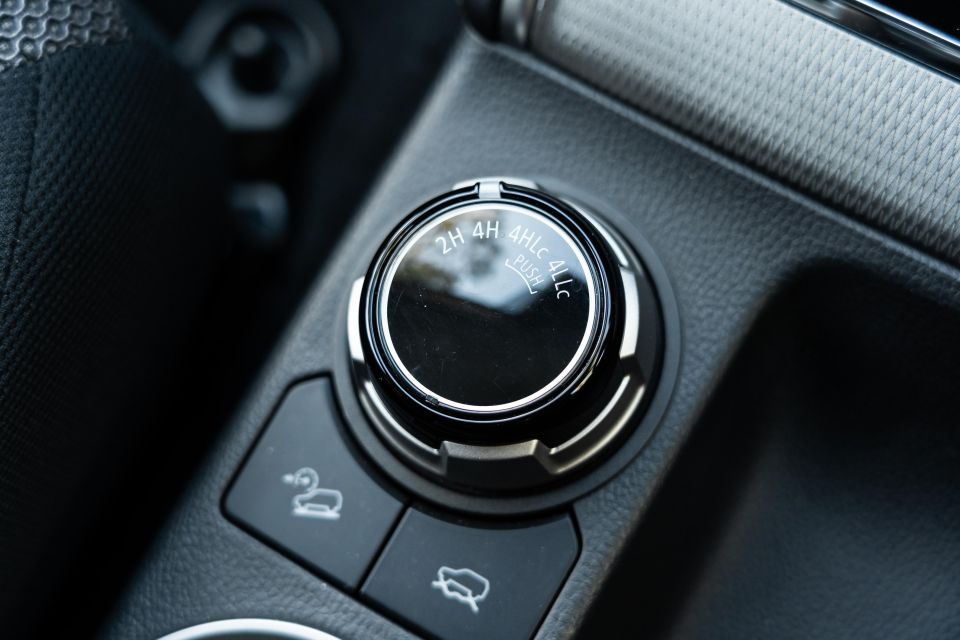
A slippery piece of bitumen is often the right place to want all-paw traction, especially with a bouncy leaf-sprung tub behind you, and only the Volkswagen Amarok has a similar system to the Triton in this particularly regard. You should not drive your Ranger, Navara or HiLux in 4H 4×4 on the road.
Claimed combined-cycle fuel economy is 8.6L/100km and the tank is 75L, but I averaged an indicated 10.3L/100km on my 350km mixed drive.
The maximum towing capacity with a braked trailer is 3100kg, compared to 3200kg for the HiLux and 3500kg for the Ranger, Navara, and D-Max.
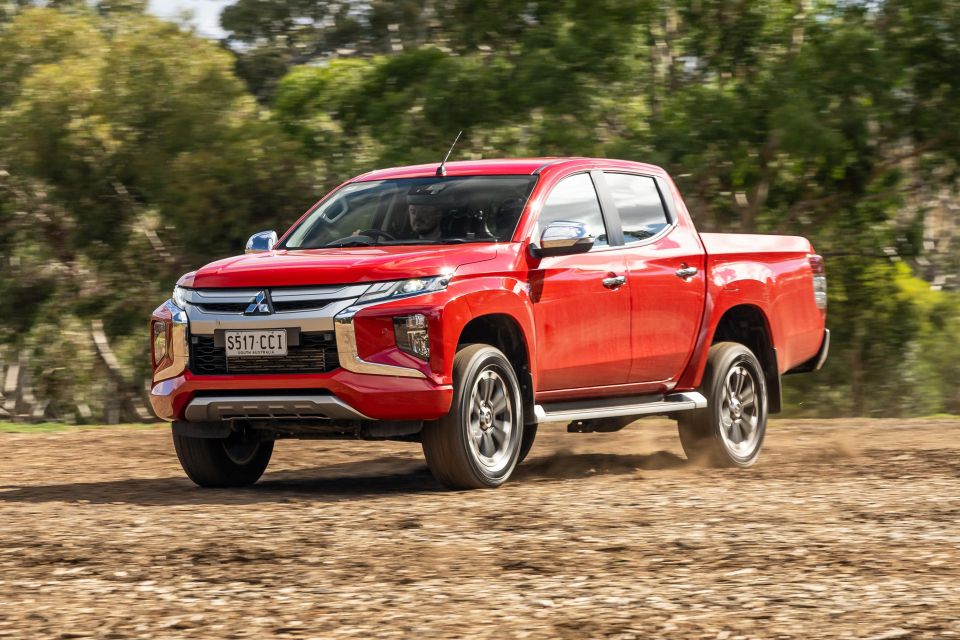
The engine is quite refined and quiet by class standards, with the body and steering wheel at idle largely free of vibration. While it’s down on power and torque compared to a few competitors it’s worth nothing the Triton is lighter – at 1990kg, it weighs 220kg less than a Ranger and 55kg less than a HiLux.
It pulls along fine albeit gruffly under a heavy throttle, and sits happily at 110km/h at about 1800rpm in sixth, quietly enough to make phone calls without necessitating a loud voice.
It uses leaf springs at the rear like most pickups – Nissan Navara aside – and like most the body jiggles and the ride pogos a little when unladen, while corrugations are felt in your hands through the hydraulically assisted steering.
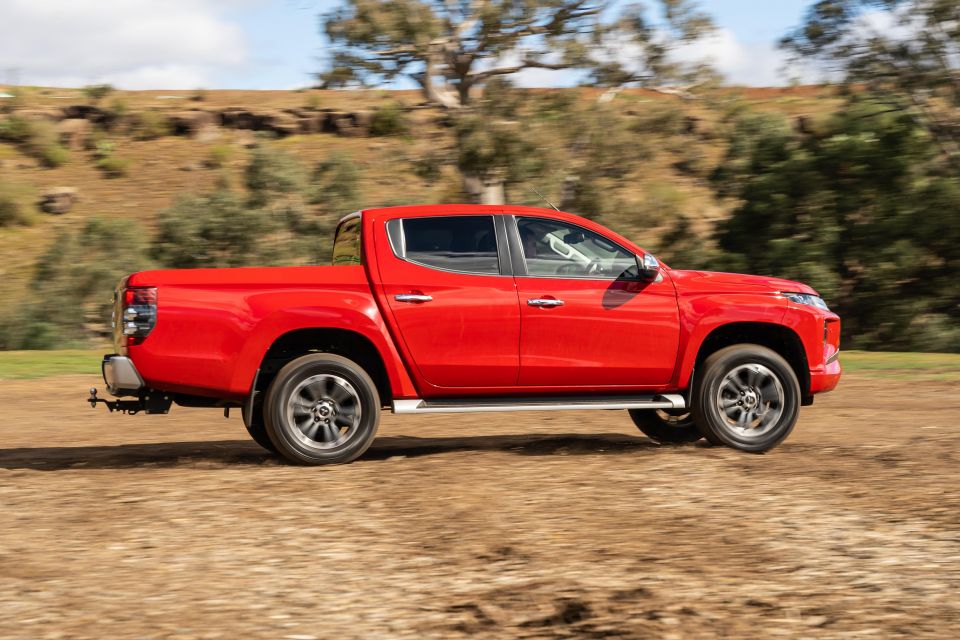
It’s not as composed as a Ranger or as sharp-handling as the almost SUV-like Amarok, but it’s also far from a class outlier. Indeed, the steering is nicely weighted and consistent, and the Triton’s relative lightness makes it feel almost nimble at times.
The maximum payload is 910kg, which is 81kg less than the Ranger’s and 45kg less than a HiLux’s. Its gross combination mass of 5885kg means that at maximum payload you can still legally tow anything up to 2985kg.
If there’s one obvious potential shortcoming it’s the particularly long rear overhang. For instance the Triton is only 77mm shorter than a Ranger overall yet 220mm shorter between the wheels. This potentially makes it a smidgen trickier to balance loads and gives it a large departure angle when off-roading.
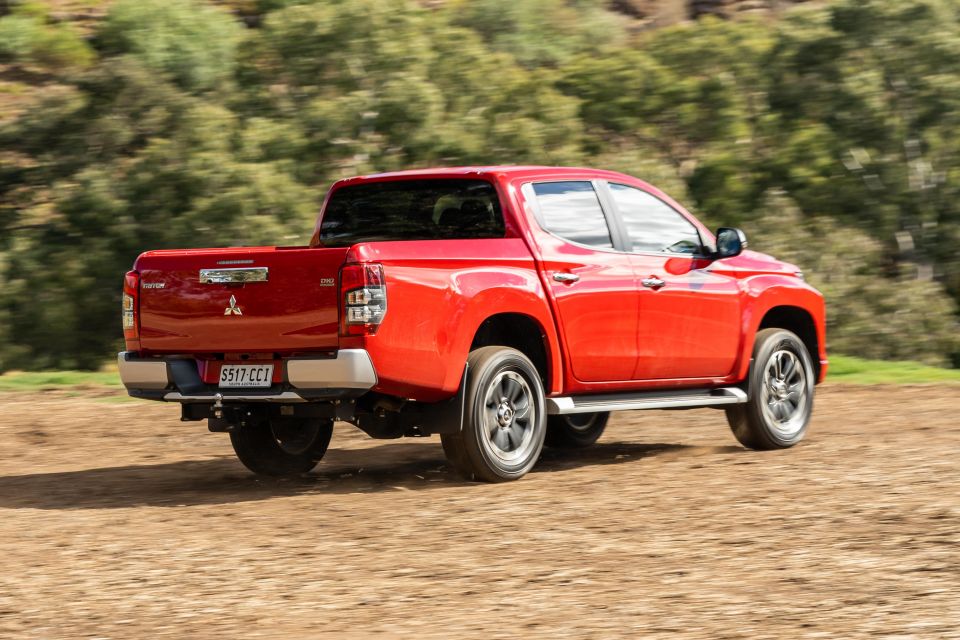
Where expert car reviews meet expert car buying – CarExpert gives you trusted advice, personalised service and real savings on your next new car.
On the upside, this three-metre wheelbase gives the Triton a smaller-than-average 11.8m turning circle, which is particularly useful in urban conditions or navigating a cluttered building site, but also has useful applications on tight trails.
We have a dedicated Triton off-road review coming separately to this one, keep your eyes peeled for that.
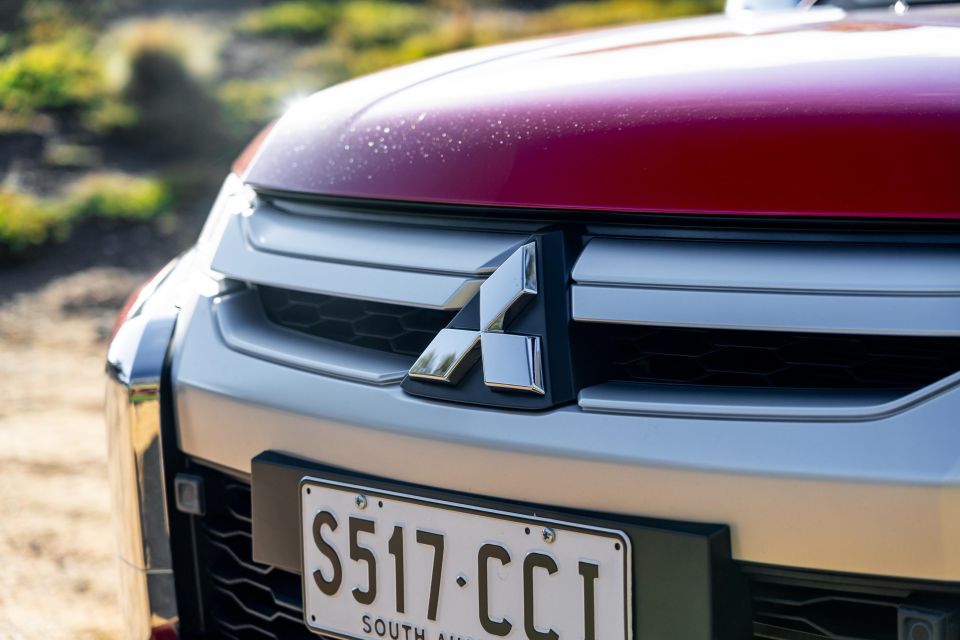
Mitsubishi’s standard warranty covers five years or 100,000km, but so long as you return to one of its dealerships at each service this extends to 10 years or 200,000km.
Servicing at dealerships also lets you take advantage of Mitsubishi’s 10 years of capped-price servicing. Maintenance in the Triton is required every 12 months or 15,000km – whichever comes first.
The following list shows service pricing for the 4×2 and 4×4 turbo-diesel:
For context, a HiLux’s servicing intervals are every six months or 10,000km, and each of the first four visits cost $250.
So as well as being cheap to buy, the Triton should prove affordable to keep maintained.
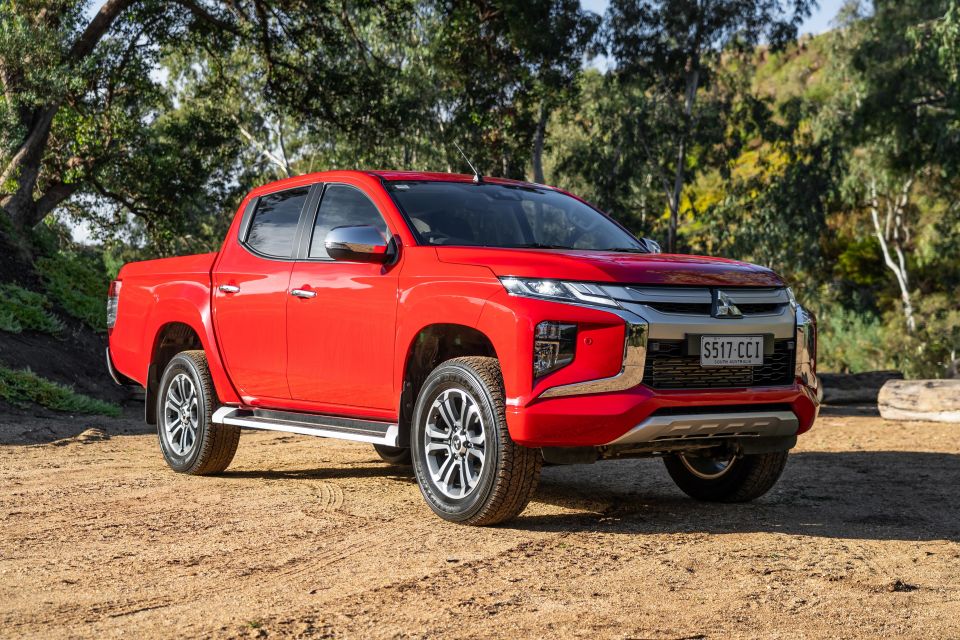
Buy your new car without the stress. It's fast, simple and completely free.

Great service from Travis and team, second time I have used this business would not hesitate to recommend them to anyone
Craig C.
Purchased a Ford Ranger in Sunshine Coast, QLD
CarExpert helped Craig save $7,224 on his Ford Ranger, now let us save you on your next new car.
Get your BEST priceIf I was buying a dual-cab tomorrow – say, if I decided to give up writing about cars and return to the country – I’d buy a Triton GLS over the equivalent Ranger or HiLux and save my money.
For the majority of users its capabilities are acceptable, and in the case of its four-wheel drive system it’s actually ahead of the pack.
Add to that its long list of safety features, good build quality, running costs, and at last an exterior design that doesn’t make you want to run wildly in the other direction, and it’s obvious that this is the best Triton to date.
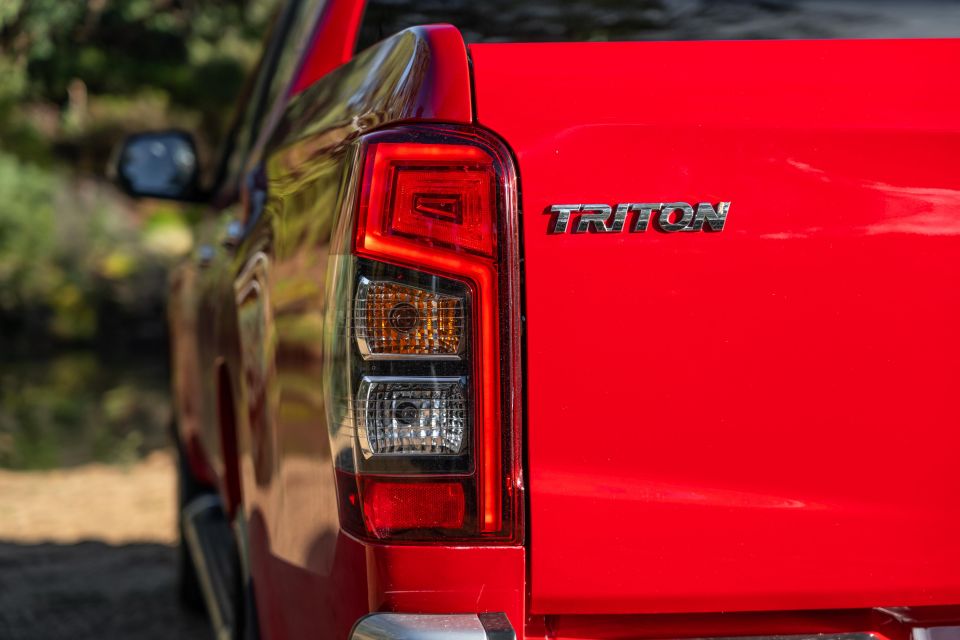
Click the images for the full gallery
MORE: Mitsubishi Triton news, reviews, comparisons and videos
Where expert car reviews meet expert car buying – CarExpert gives you trusted advice, personalised service and real savings on your next new car.


James Wong
3 Days Ago


William Stopford
3 Days Ago


Josh Nevett
2 Days Ago
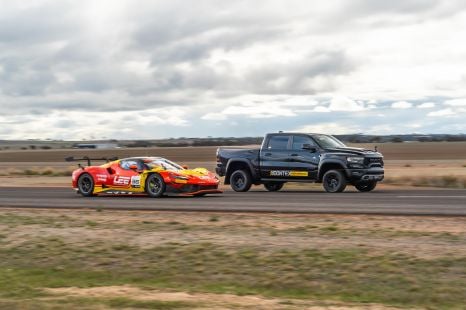

Paul Maric
1 Day Ago


Ben Zachariah
16 Hours Ago
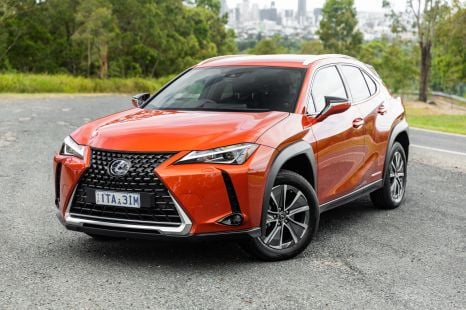

William Stopford
16 Hours Ago